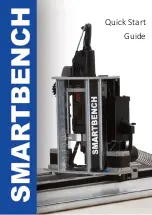
TOPEX Bytton (HSPA+ / LTE)
ByttonLTE(full)_genericUsermanual_sw306FAS_revN.1.docx
Page: 290 / 290
In case of locations with a low level of 4G signal, Yagi (high gain, directive) antennas are also available for
the LTE frequency band. They may be apparent or enclosed in a “Radome”, single ori paired (LTE
technology typically employs antenna diversity, thus two antennas are used). Typicall Yagi gains range
for 9dBi up to 14dBi in the 2500-2700MHz frequency bands, and the UV-stable, UL flame rated radome
assures all-weather operation.
Warning!
Don’t use excessive force when threading the antennas. Make sure the antennas are securely
screwed into the respective RF connectors, but do NOT use a spanner or screw key, which could damage
the antenna connector! Tighten the flange lightly, by hand.
The stick antennas has vertical polarization, they should be placed in vertical or horizontal position,
depending of the local RF field condition for the respective frequencies bands.
In case of antenna diversity (MIMO) versions, the antennas shall be connected in the same way, only
there are two of them:
Figure 11-5: Photo of diversity-enabled Bytton, with two stick antennas for WiFI and two connectors for
the 4G Mobile antennas.
Warning!
For the multiple-antenna variants of the equipment, the indications “MAIN” and “AUX” must be always
observed, even when you use two identical antennas. This holds true both for the Mobile and WiFi
antennas, as shown:
Figure 11-6: Schematic drawing of the “AUX and MAIN” markings of antenna connectors, both for Mobile
(LTE network) and for Wi-Fi (type N).
This rule means that, when you connect a single antenna to a diversity-enabled equipment, always use the
MAIN connector. With just one antenna, it will not be able to operate in diversity mode, still it will work
correctly. But if you connect just a single antenna, to the AUX connector instead of MAIN, then it won’t be
able to work properly!
Notice:
The Bytton LTE unit and its antennas should be placed such as to be as far as possible from
appliances or office equipment that is sensitive to radio interference (microwave ovens,
copiers, TV sets, PC displays, and multimedia systems).
For best results, try to find for the single or dual WiFi and HSPA or LTE antennas a place of
maximum signal reception.
In addition, the antenna must NOT be located near heavy-duty equipment that may generate
electromagnetic interferences, such as electric motors or heaters.

































